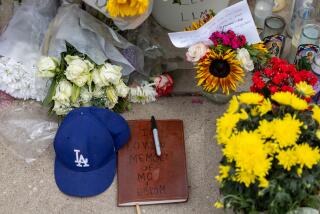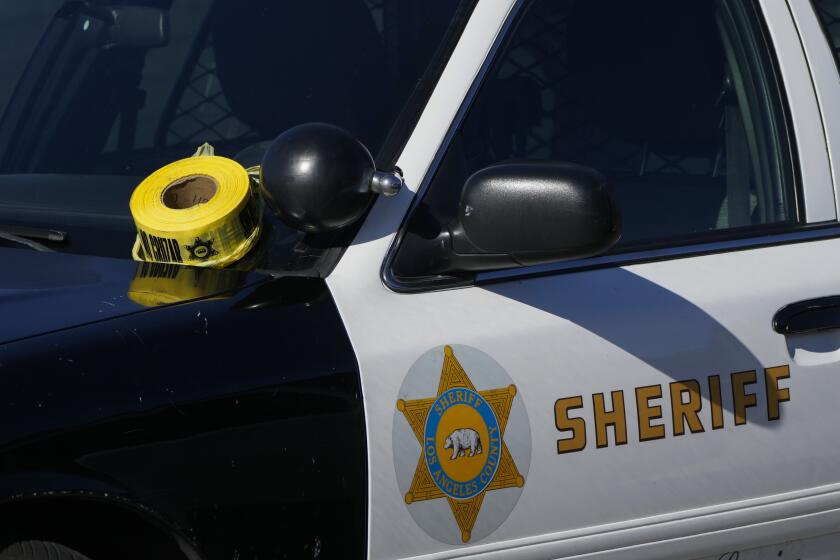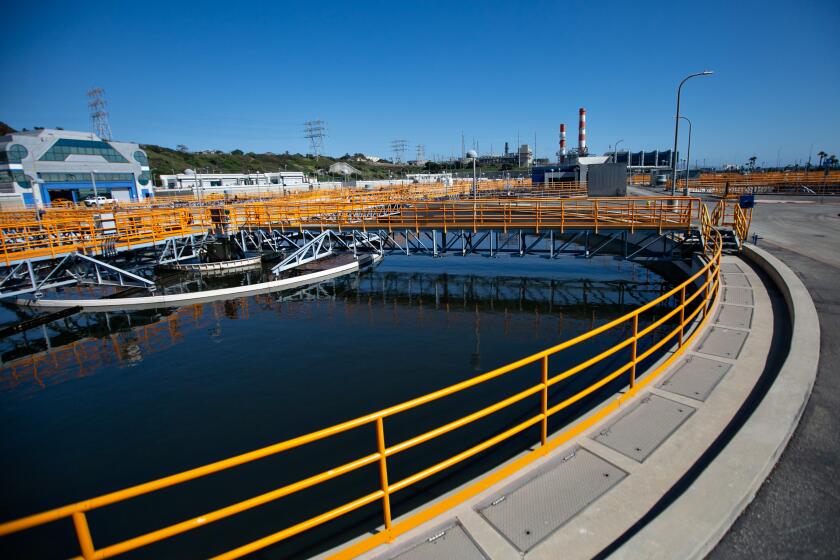The Fight Against Crime: Notes From The Front : Firefighters’ No. 1 Obstacle Is Injuries
Every firefighter knows he or she will have to continually face the dangers of fire during the course of a career, but the hazards of the job go beyond darting through raging flames.
As they try to protect others, firefighters also have to protect themselves from injuries that most people never think about.
Because the city Fire Department sees itself as a “full spectrum life safety agency” that not only fights fires but responds to medical emergencies and potentially hazardous materials spills, the possibilities for injury are nearly limitless, according to spokesman Brian Humphrey.
Often, problems begin before the firefighters ever unleash the flow of a water hose or shuttle toddlers down unstable ladders, city Fire Safety Officer Jim Dolan said. They first must avoid drivers who fail to yield or slow when a fire engine is racing toward an emergency.
“That’s an ongoing concern of ours,” said Dolan, referring to both firefighters’ safety and engine run-ins with motorists’ vehicles. “We are constantly trying to caution people through news bulletins or other media that when they see a fire engine--pull over.”
Once firefighters reach the fire scene, onlookers continue to be a danger. Barging into a residence, where a sleeping person may be unaware of firefighters’ presence, has left more than one firefighter hurt over the years. But no firefighter responding to an emergency has ever died at the hands of an unknowing and gun-wielding resident.
In fact, Dolan said a firefighter has not died on the job in Los Angeles in more than 10 years. Careers, however, have been cut short by freak accidents. Humphrey said a good friend recently had to retire from the department after falling through a roof while on the job. The firefighter’s injuries have left him with a lifelong limp.
Both Humphrey and Dolan said even the best prepared and well-trained firefighting men and women face these types of uncontrollable injuries every day.
Humphrey said abandoned or pillaged buildings are often danger sites. Holes in the floor where appliances or toilets may have been ripped out by scavengers can result in leg injuries or sometimes send a firefighter slipping into the space under the hole.
Although injuries suffered while fighting a fire or traveling to one are the most common, others can arise without notice.
Responding to calls to aid gunshot victims and others needing medical attention can be potentially dangerous. There is potential exposure to the blood of victims who have hepatitis or are HIV-positive. Gloves are now standard for any incident in which emergency workers may touch blood.
Firefighters also receive burns without ever brushing up against flames. “Any time you get wet and get close to a hot environment there is the potential for the water to turn into steam,” Humphrey said. “Even with gloves, it’s like putting your hands into a pot of boiling water.”
The scorching Southland summers and fires that usually accompany them combine yearly to create more health risks. Heat exhaustion and dehydration nag at firefighters, causing some to seek medical help.
Dolan did not have any department statistics on just how many firefighters are injured each year, but said sprains and strains to ankles, arms and shoulders are among the most reported injuries.
The sprains usually occur when firefighters hurriedly race back and forth from fire engines to burning buildings. These more minor injuries occur while firefighters balance heavy equipment such as ladders or run with hoses on their shoulders.
And when responding to calls about hazardous material spills, Dolan said firefighters need to be careful about inhaling smoke that may contain deadly chemicals.
More to Read
Start your day right
Sign up for Essential California for news, features and recommendations from the L.A. Times and beyond in your inbox six days a week.
You may occasionally receive promotional content from the Los Angeles Times.






